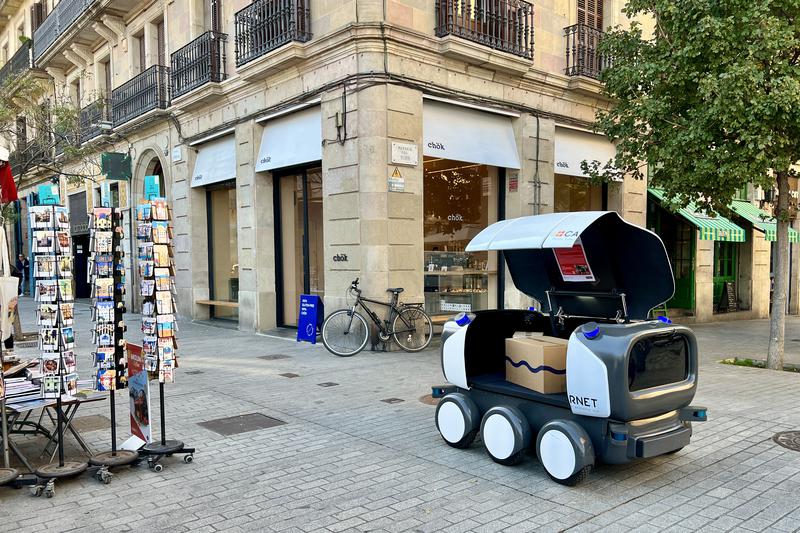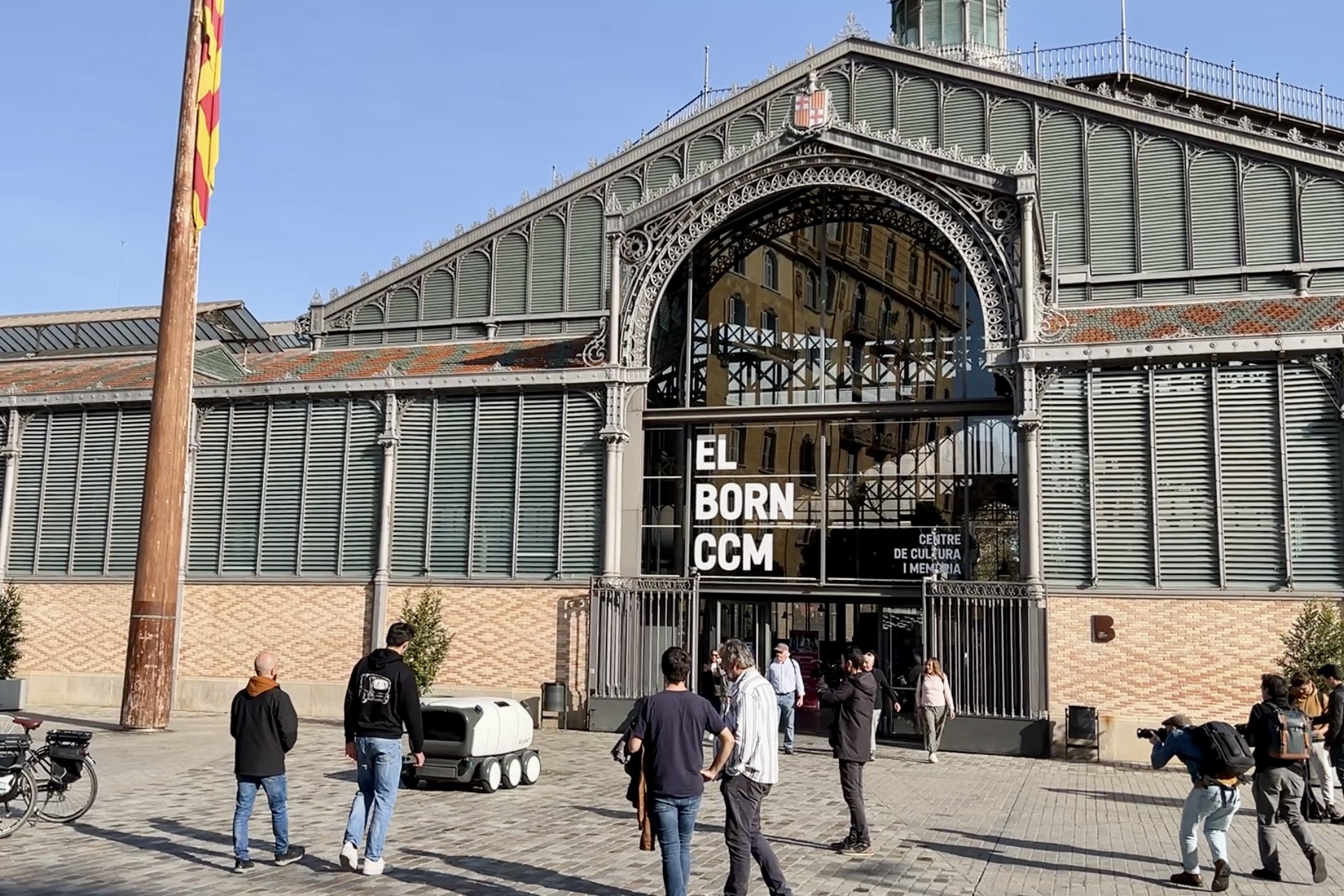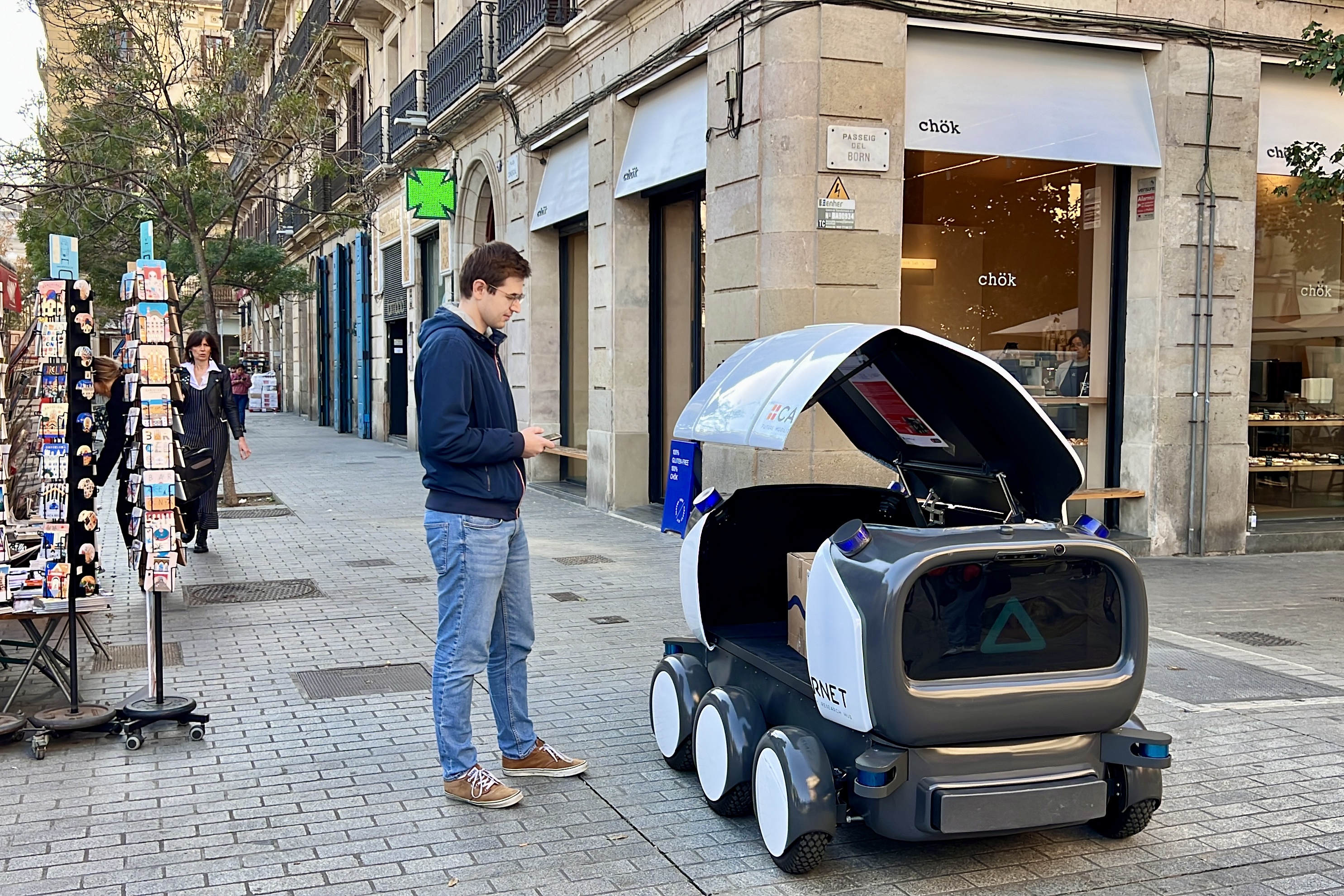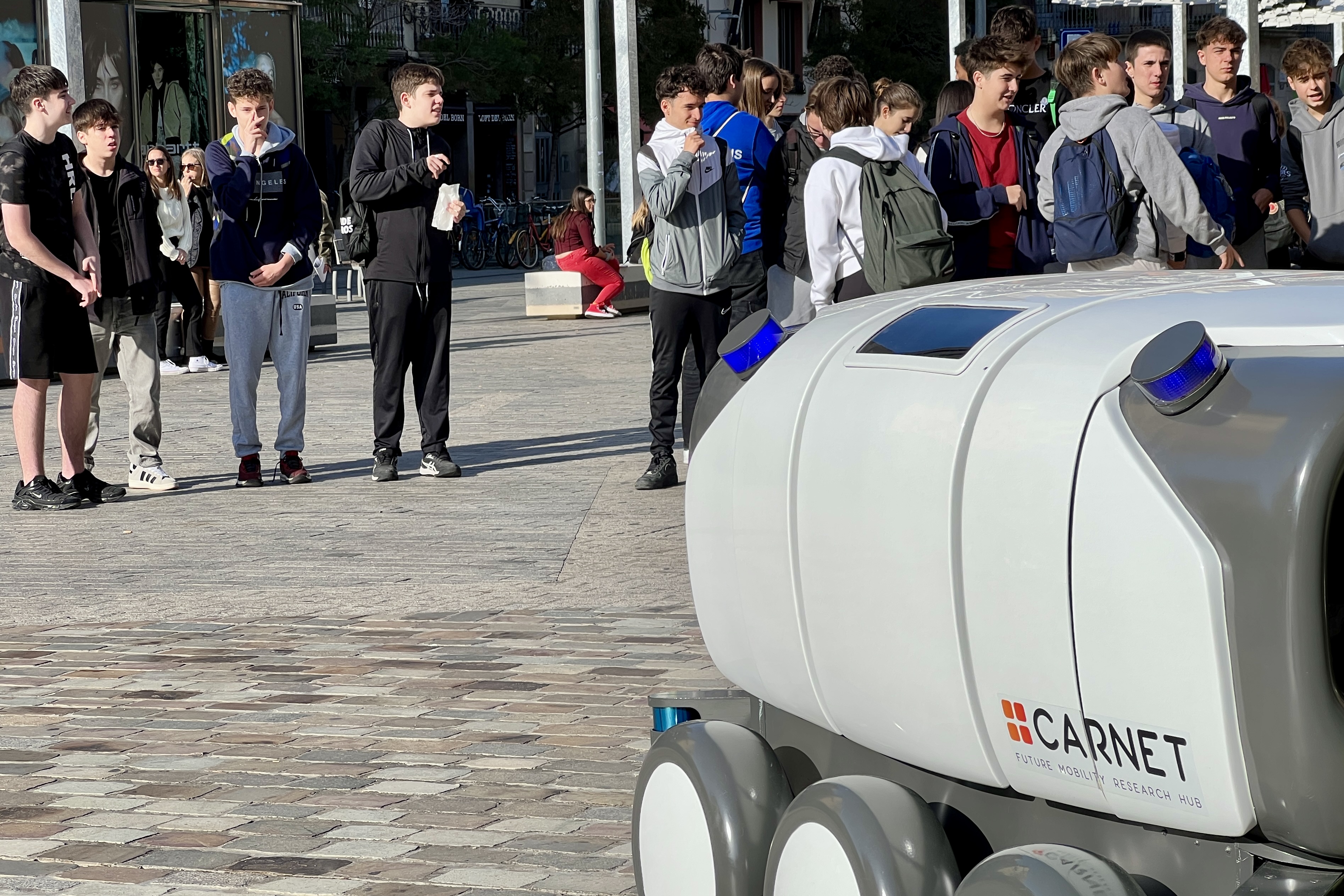Testing the future of package delivery with autonomous robots on Barcelona streets
Ona Robot part of a study on last-mile delivery impact reduction on cities

More and more Catalans are buying online with last-mile deliveries becoming one of the main contributors to traffic and their environmental impact around cities.
A group of researchers from Catalonia's Polytechnic University (UPC) is looking for a friendlier approach and is now testing Ona Robot, an autonomous vehicle ready to deliver parcels, around Barcelona's streets.
Ona is quite visibly striking on the street, as it is a 1.5-meter-long moving white capsule moving on six wheels. This large capsule automatically opens next to the customer's phone so they can pick up the parcel.
The press test happened outside the Barcelona Born Cultural and Historic Center, contrasting the 1876 iron building with this 21st-century technology still under development.

UPC's study seeks a new way to implement last-mile delivery in cities using autonomous robots. However, "it is just a test with no date on when it could become a reality," Àngel Santamaria, a Robotics and Informatics Institute researcher, told media outlets.
"In the future, if it ends up being used, we could set up urban distribution centers on the outskirts of densely populated areas such as neighborhoods, for Ona to pick up a parcel and then deliver it," he added.
Tests are part of the Botnet project focused on investigating how to reduce noise pollution, the environmental impact, and traffic congestion caused by last-mile delivery vehicles. Around 20% of cars driving around Barcelona are package deliveries, causing around 40% of the overall polluting emissions.
"Our goal is to try and get rid of all these traditional delivery package transport options that use fuel," Santamaria said.

The project started in 2017, and Ona is the second version of the prototypes they developed; it collects all packages "to broaden its operations." The first version was able to select what kind of parcels it picked.
Experts already know that pedestrians facing one of these robots when walking on the street are curious, and many decide to step in front of Ona and take pictures and selfies with it.
This behavior makes the robot stop just to protect those walking around it, and researchers are now planning to use the two large screens on both ends of the white capsule—which serve as the robot's face—to politely ask people to step away so Ona can continue to its destination.

Tests taking place now will be used to try different positioning tools in the robot's mechanism as "probably there is not a good GPS or Galileo satellite signal, or there is a lot of people around the area, so the robot has to be smart and safe to drive around such streets," Santamaria said.
UPC researchers will continue testing the robot around Barcelona's El Born neighborhood as the idea is to have the prototype in a real operation area. Santamaria has already said that while the technology works on this kind of device, legislation will be needed to establish the rules for how these futuristic-looking robots can share our streets.